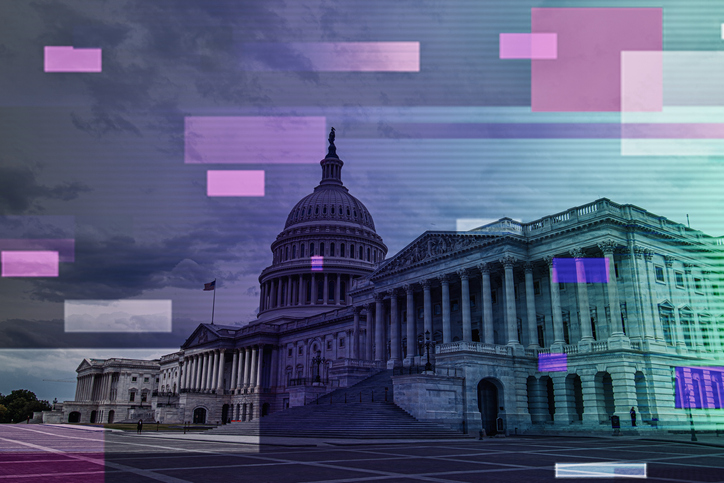GENIUS Act paves way to widespread tokenization in US capital markets
The recent high-profile launch of tokenized money market funds (MMFs) in the US, following the passage of landmark legislation, marks a significant step in bringing blockchain-based finance into the regulatory mainstream, shifting attention away from crypto speculation and toward more institutional, low-risk use cases.
In a high-profile collaboration, BNY Mellon and Goldman Sachs have launched the first US-based tokenized MMFs. This development comes on the heels of the Generating Equity and New Interest for Unsung Small Businesses (GENIUS) Act, a landmark piece of legislation passed in July that establishes the first US federal framework for stablecoins.
***
Get weekly insights from The Intuition Finance Digest. Elevate your understanding of the finance world with expertly-crafted articles and podcasts sent straight to your inbox every week. Click here: https://www.intuition.com/finance-insights-the-intuition-finance-digest/
***
How does the Goldman and BNY Mellon collaboration advance tokenized MMFs?
Goldman Sachs has teamed up with BNY Mellon to pilot a tokenized money market fund (MMF), a move that connects Goldman’s digital asset platform (GS DAP) with BNY’s custody infrastructure. Building on earlier efforts – including GS DAP’s role in a 2022 European Investment Bank bond issuance – this pilot allows tokenized fund shares to be used as collateral on a distributed ledger, potentially streamlining margin calls and settlement.
While the scope is still limited, the collaboration shows how tokenization could improve collateral mobility – an issue that matters both in traditional repo markets and in the evolving ecosystem of permissioned blockchains.
The timing is notable. Institutional interest in tokenized funds has been rising, and by passing the GENIUS Act the US Congress is facilitating exactly this kind of innovation.

How does the GENIUS Act open the door to tokenization?
Tokenization of traditional financial assets isn’t new – Franklin Templeton and BlackRock were early movers with tokenized money market funds launched in 2023 and 2024, respectively. But the GENIUS Act crucially provides regulatory legitimacy to this trend.
Though primarily aimed at improving small business financing, the bill clarifies the treatment of tokenized funds and stablecoins, encouraging digital assets that align with traditional finance and US policy goals. To this end, the bill places new restrictions on stablecoins – including a 100% reserve backing requirement (with cash or short-dated treasuries), monthly disclosure requirements, and, most significantly, a ban on interest-bearing stablecoins.
By incentivizing capital flows away from crypto-native tokens and toward regulated, tokenized funds that can offer yield within a compliant framework, these limits on stablecoins aim to bolster demand further for risk-free US assets while preserving the dollar’s supremacy in global finance.

What is tokenization & what are its benefits?
In simple terms, tokenization refers to the process of creating a digital representation of a real-world, or traditional financial asset – in this case, money market fund shares – on a blockchain ledger. This digital mirror enables more seamless tracking, settlement, and potential transfer of ownership, without changing the underlying asset structure.
Key benefits when it comes to tokenizing traditional financial assets include enhanced liquidity and more efficient utilization of collateral. In a conventional MMF, redemptions can take up to two business days. Tokenized MMFs, however, enable instant settlement, which could eventually support real-time treasury and collateral operations.
According to Goldman Sachs, the blockchain-based system could allow tokenized MMF shares to be used more efficiently as collateral in financial transactions, without the need to liquidate the underlying asset. Instead of selling MMF shares to raise cash for margin or lending purposes, token holders may be able to transfer or pledge tokens directly in future collateral arrangements.

Why does institutional appetite for blockchain-based funds keep growing?
These developments are likely to boost already fast-growing institutional demand for tokenized money market funds (MMFs). Demand is coming not just from hedge funds, pension plans, and other asset managers seeking secure, short-duration, yield-generating instruments that can integrate with blockchain infrastructure, but also from custodians and other service providers aiming to modernize settlement and collateral management.
More broadly, the move reflects a quiet shift in digital asset strategy – away from crypto’s speculative excesses and toward tokenizing real-world financial assets (RWAs) in pursuit of efficiency, transparency, and liquidity.
Conclusion – TradFi and crypto more intertwined than ever
The launch of tokenized MMFs marks another step in the slow but steady convergence of blockchain infrastructure and traditional finance. Rather than displacing established institutions, tokenization is being folded into them—quietly reshaping how liquidity, collateral, and financial instruments move through the system.
As tokenized financial products gain traction, the boundary between crypto and conventional markets continues to blur. This growing interdependence brings efficiencies—but also potential risks. If blockchain-based assets become embedded in core financial operations, their vulnerabilities could spill over into the broader system.
For now, however, the trend is clear – tokenization is moving beyond “proof-of-concept” to becoming part of the operational backbone of mainstream finance.
Intuition Know-How, a premier digital learning solution for finance professionals, has several tutorials relevant to the content of this article:
- Tokenization
- Digital Assets
- Blockchain
- Stablecoins
- Crypto Assets – An Introduction
- Crypto Assets – An Introduction
- Securities Lending – An Introduction
Browse full tutorial offering



